The Beauty and Challenge of White Butterbur
Imogen examines this early flowering non-native in the Scottish Highlands
Introducing White Butterbur (Petasites albus)
In a small village in Scottish Highlands there lived a gardener who had a deep love for unique plants. Many years ago, she had stumbled upon the white butterbur at a local plant fair. Enchanted by its early-blooming, spiked white flowers, she had eagerly introduced it to her riverside garden. It was a cherished sight each year to see the flower heads burst through the soil one of the first to bloom in the spring. But as the years passed the gardener noticed some changes along the riverbank. The once diverse undergrowth, home to an array of Scottish wildflowers and insects, was now a monotonous carpet of the same white butterbur, transformed into an aggressive invader. With a mix of regret and newfound responsibility, started local conservation efforts to restore the the riverbank - lifting and removing the rhizomes of the once cherished plant.
In the glens of the Scottish Highlands, the white butterbur (Petasites albus) has been turning heads this month with its early-blooming white flowers and large, heart-shaped leaves. However, beneath its charming facade lies a more troublesome story of biodiversity loss and the slow crippling strangling of natures river bank corridors.
From February to April, this plant, creates a stunning visual spectacles. Its spiked white flower heads dominate damp riverside areas, following on from this early bloom come it’s large leaves, which form dense canopies that are rhubarb-like in appearance - creating a carpet of dense foliage alongside burns and riverbanks, shading out other plants.
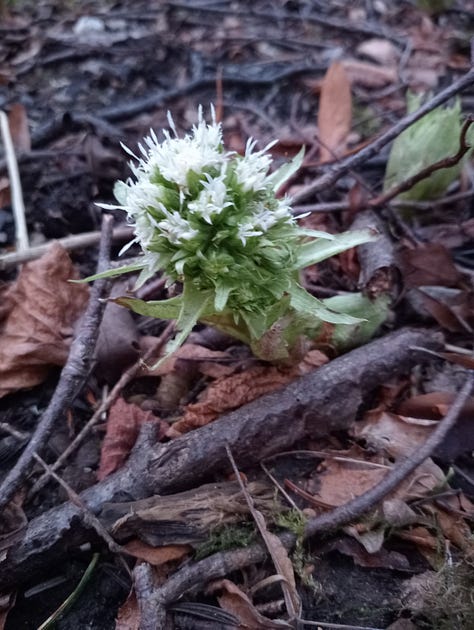
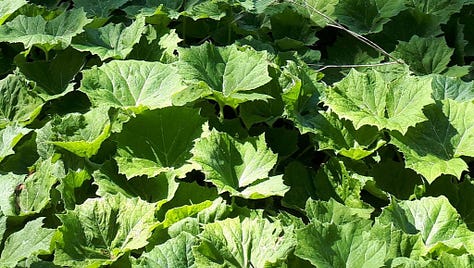
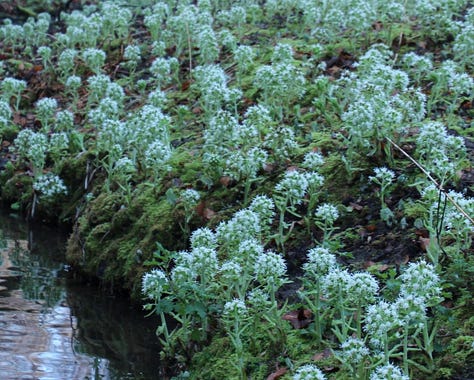
It is, however, not a native species to the Scottish Highlands. It differs from the native common butterbur (Petasites hybridus) in several ways. The white butterbur's flowers have narrow white petals and long pale-green sepals, contrasting with the common butterbur’s mauve to purplish flowers and shorter sepals. The two can be tricky to distinguish by leaves alone. So now when the blooms are out is the best time to identify it.
The Journey to Scotland and Environmental Concerns
White butterbur's journey to the Scottish Highlands began with its importation as a garden ornamental from mainland Europe and Southwest Asia. Its escape into the wild has led to its current spread, particularly in Northeastern Scotland, but it is certainly to be seen in Ross-shire and other parts of Highland.
It’s early leafing and dense foliage suppress native vegetation growth and reduce wildlife variety. Moreover, its weaker rhizomes, compared to native plants, exacerbate riverbank erosion, leading to sediment issues in water bodies and increasing flood risks downstream.
Eradication Efforts and Reporting
Controlling white butterbur in Scotland is challenging due to its widespread presence. Current trials include methods like herbicide application, hand digging, and strimming, along with planting native trees and seeding wildflower mixes to suppress its regrowth. These trials aim to establish effective removal methods for this invasive species. It can regrow from parts of its rizome so it is a pernicious fighter.
How to Report and Help
Awareness and vigilance are key in combating the spread of white butterbur. If you spot this plant in the Scottish Highlands, reporting it to local environmental groups or initiatives like the Scottish Invasive Species Initiative is a useful step. Engaging in community eradication efforts, such as clean-up drives or habitat restoration projects, can also be immensely helpful.
While the white butterbur certainly adds a touch of beauty to the breaking spring in the Scottish landscape, its invasive nature poses creeping environmental threats. It's a stark reminder of the delicate balance between appreciating nature's beauty and maintaining ecological integrity. As efforts continue to manage this species, community involvement and awareness remain essential in preserving the natural heritage of the Scottish Highlands.
Imogen Furlong, the High Life Highland Countryside Ranger Manager, is known for her enthusiasm, organisation, and drive. Her deep passion for the Scottish Highlands' wildlife and extensive experience in outdoor education and recreation management have been central to this role. Imogen is a practical and collaborative project manager, empowering her teams to work effectively in communities and contribute to local conservation efforts.




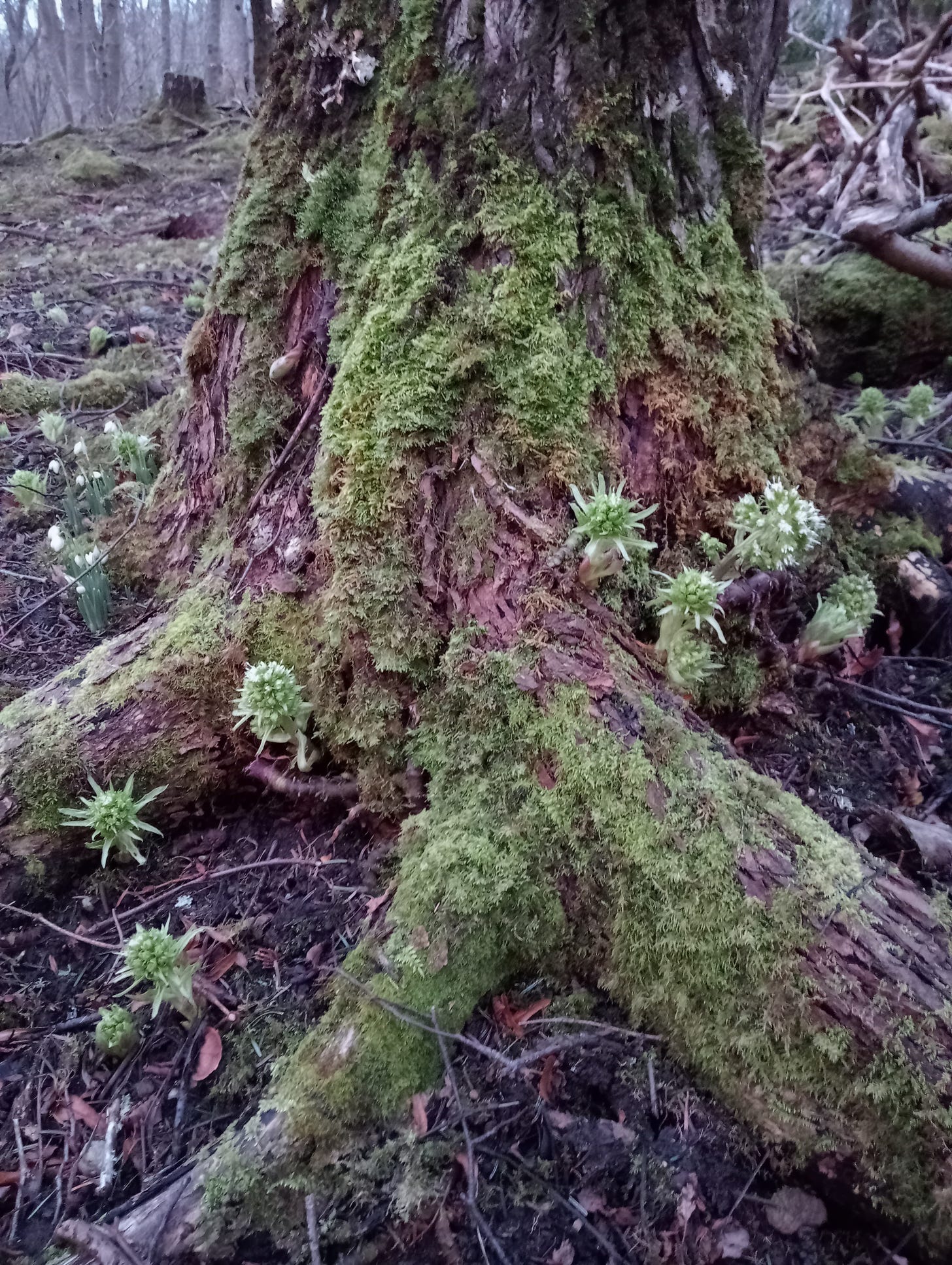
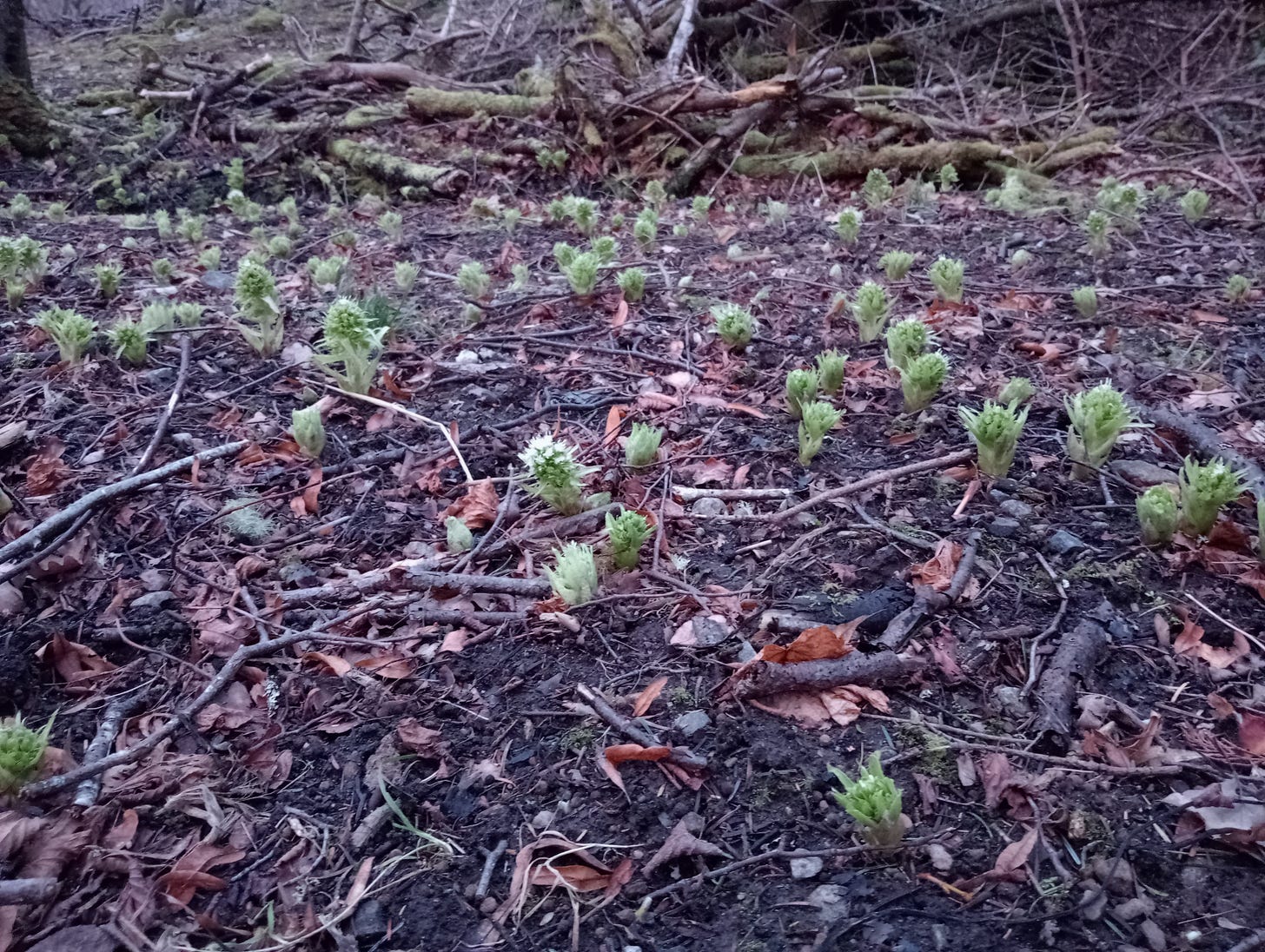
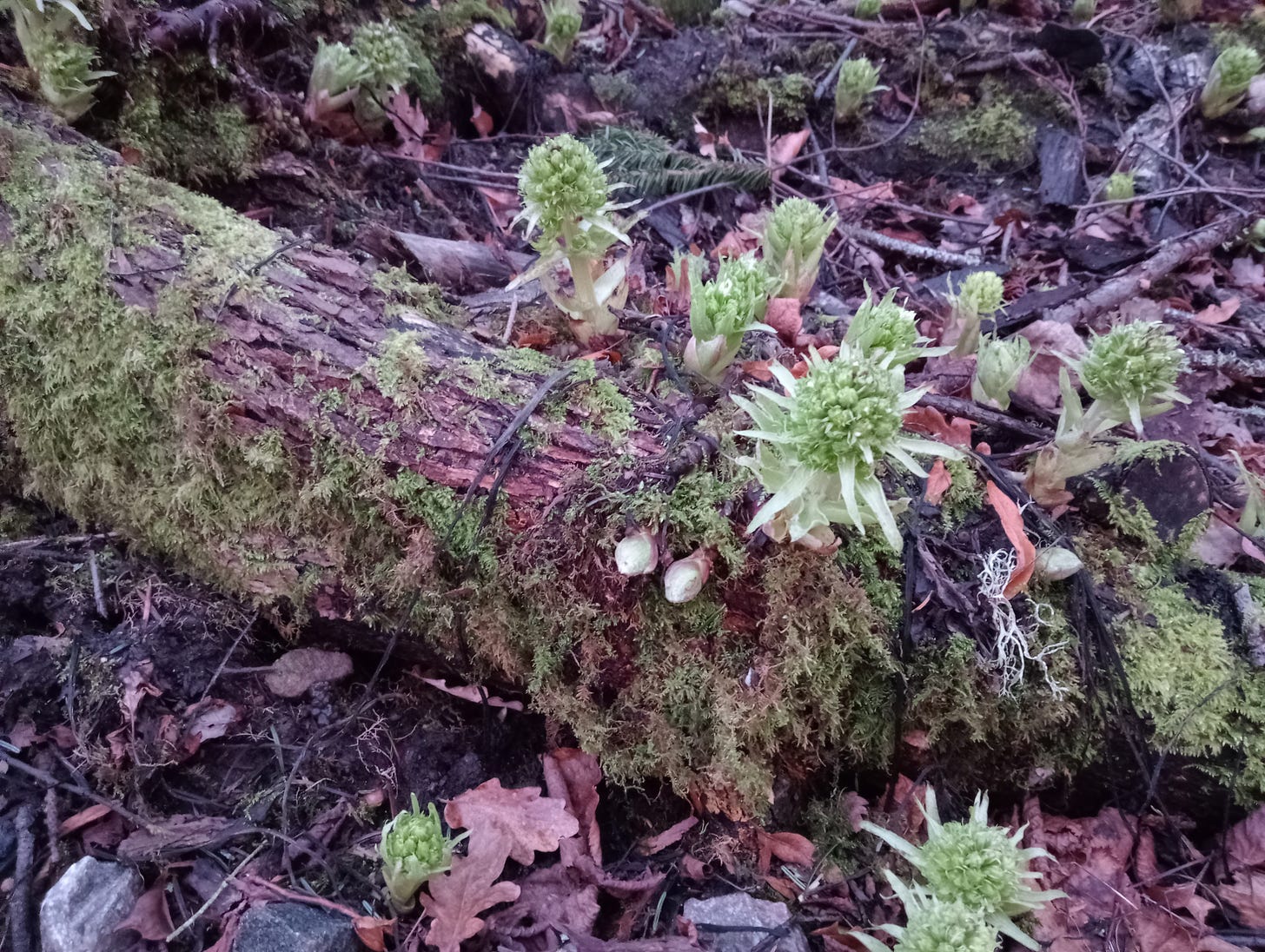
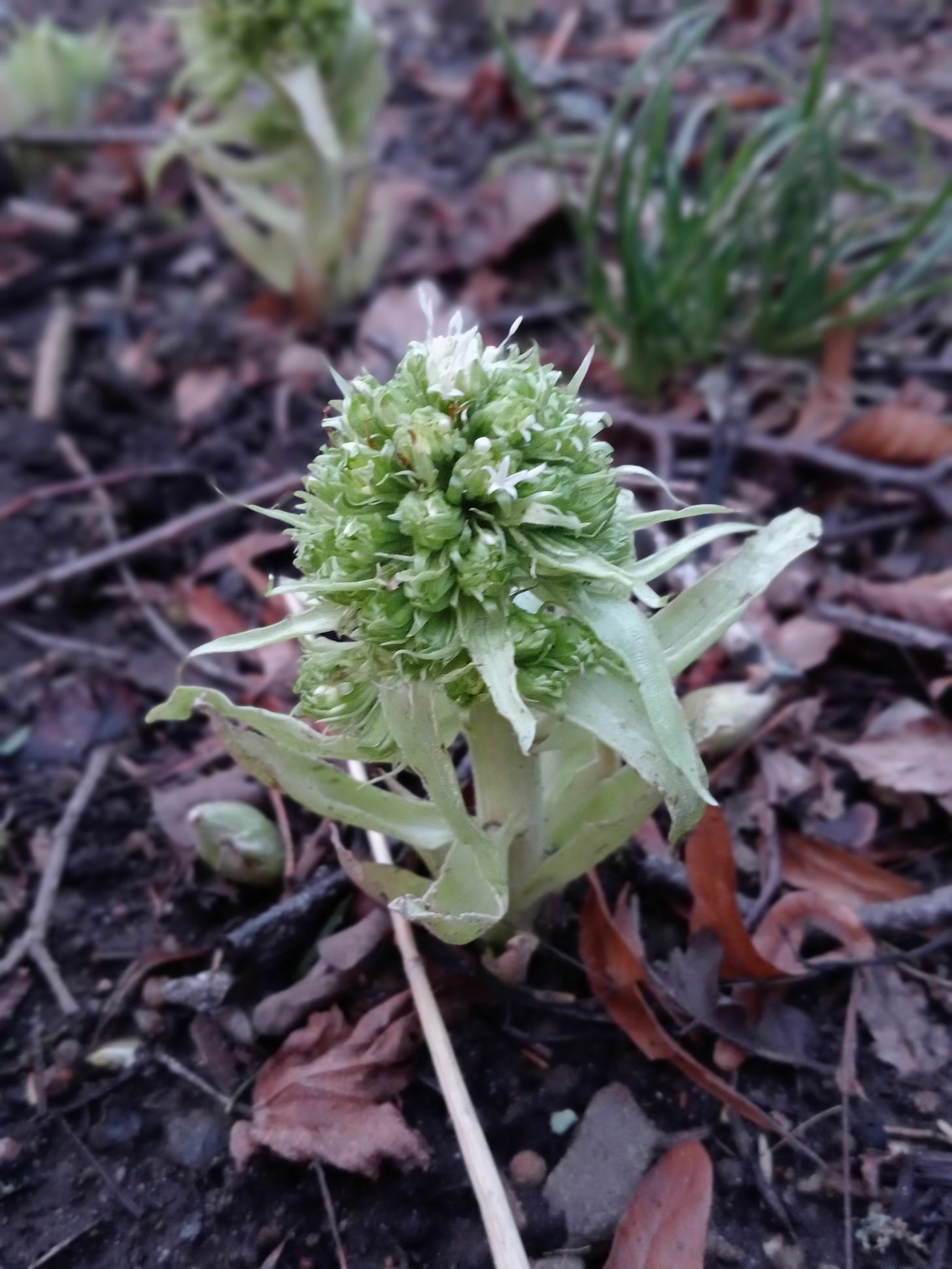

Unfortunately it's rife along the banks of thecNewhall Burn in Resolis.